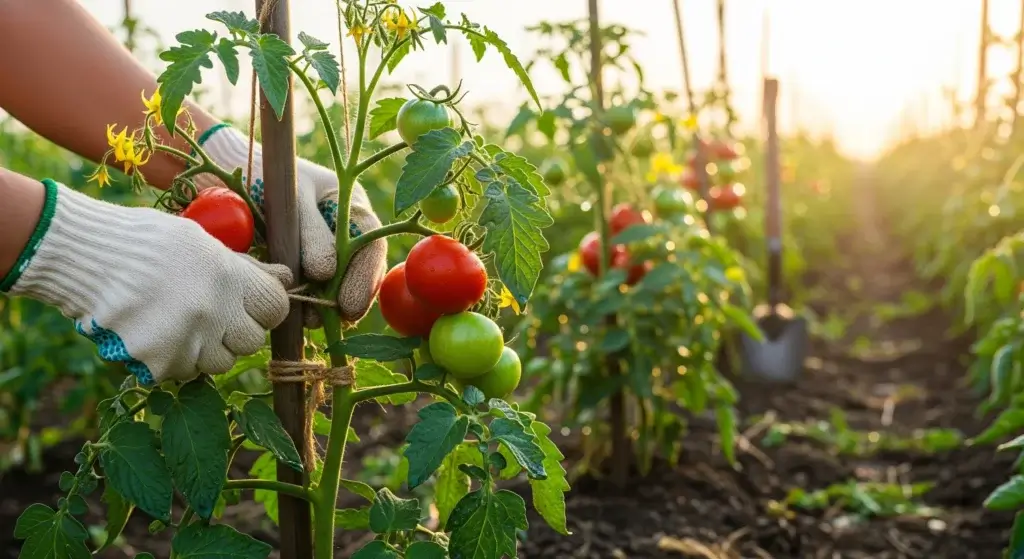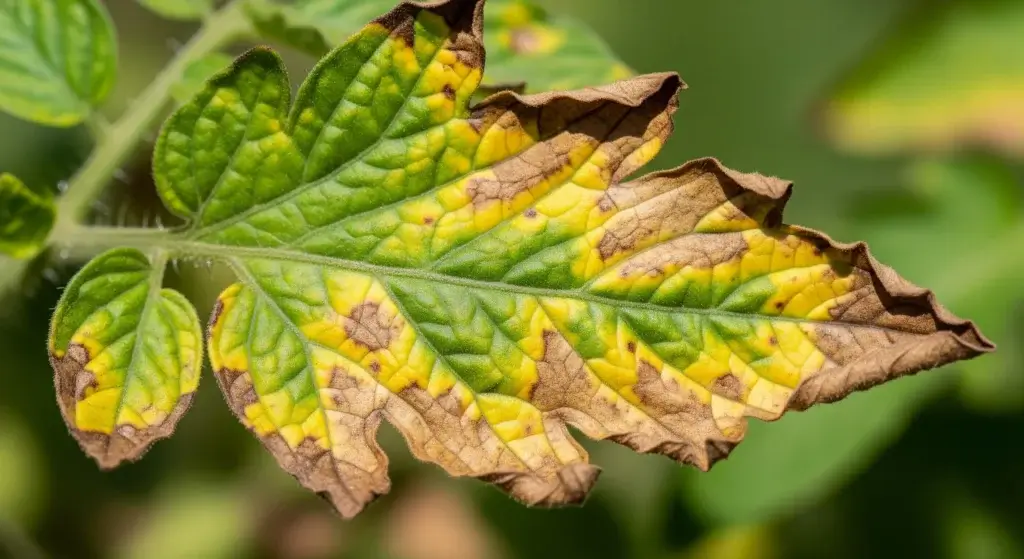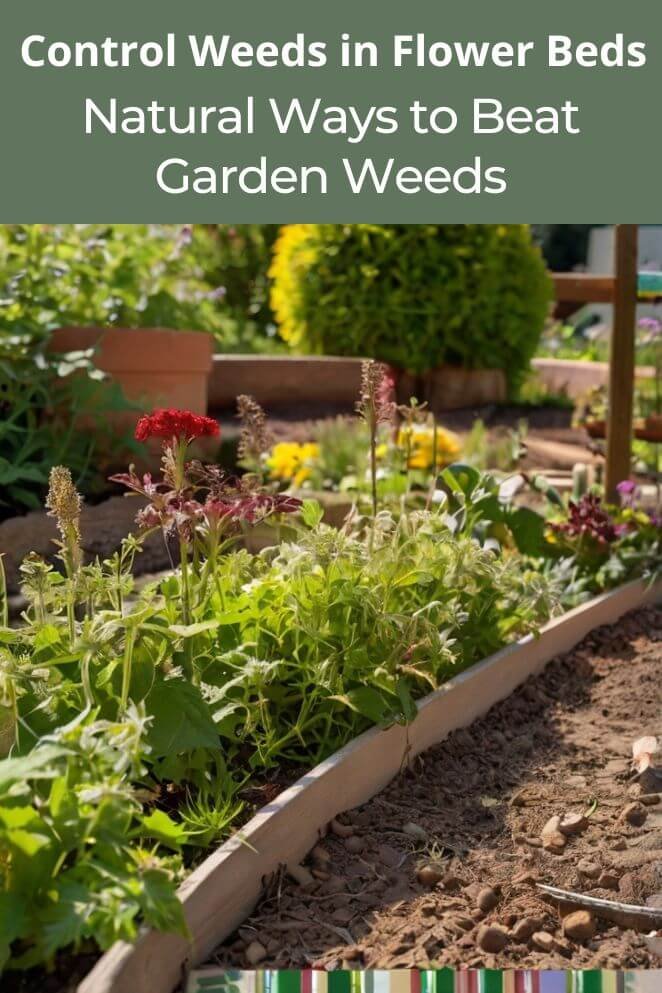
Weeds can be the bane of any flower bed, competing with your beloved blooms for nutrients, water, and sunlight.
While they may seem harmless at first, they can quickly take over and ruin the aesthetics of your garden.
In this blog post, we’ll discuss the importance of weed control, common types of weeds found in flower beds, and various methods to effectively manage these pesky invaders.
Importance of Weed Control
Managing weeds is crucial for maintaining the health and beauty of your flower beds.
Here’s why keeping weeds under control is so important:
Resource competition
Weeds compete directly with your flowers for essential resources like water, nutrients, and sunlight.
According to the University of California Agriculture and Natural Resources, just one weed can reduce the growth and yield of nearby plants by up to 50%.
When weeds are allowed to take over, they can severely limit the resources available to your flowers, causing them to struggle and potentially reducing their overall health and productivity.
Pest and disease hosts
Weeds can also act as hosts for pests and diseases that might spread to your flowers.
Some weeds attract harmful insects or harbor diseases, which can then transfer to your plants.
This not only weakens your flowers but can sometimes lead to their death.
By controlling weeds, you reduce the risk of these pests and diseases taking hold in your garden.
- Read also: Sculpting Elegance: A Guide to Desert Rose Plant Pruning
- Read also: Thriving in Color: A Guide to Dracaena Colorama Care
Aesthetic appeal
Weeds can quickly detract from the beauty of your garden.
A flower bed overtaken by weeds can look untidy and unkempt, overshadowing the flowers you’ve worked hard to cultivate.
Regular weed control helps ensure that your flowers can shine and that your garden remains visually appealing.
Preventing weed spread
Allowing weeds to grow unchecked can lead to even more problems down the line.
Weeds that are left to go to seed will produce more weeds in the future, leading to a larger infestation.
By taking a proactive approach to weed management, you can prevent the spread of weeds and keep your flower beds healthy and attractive.
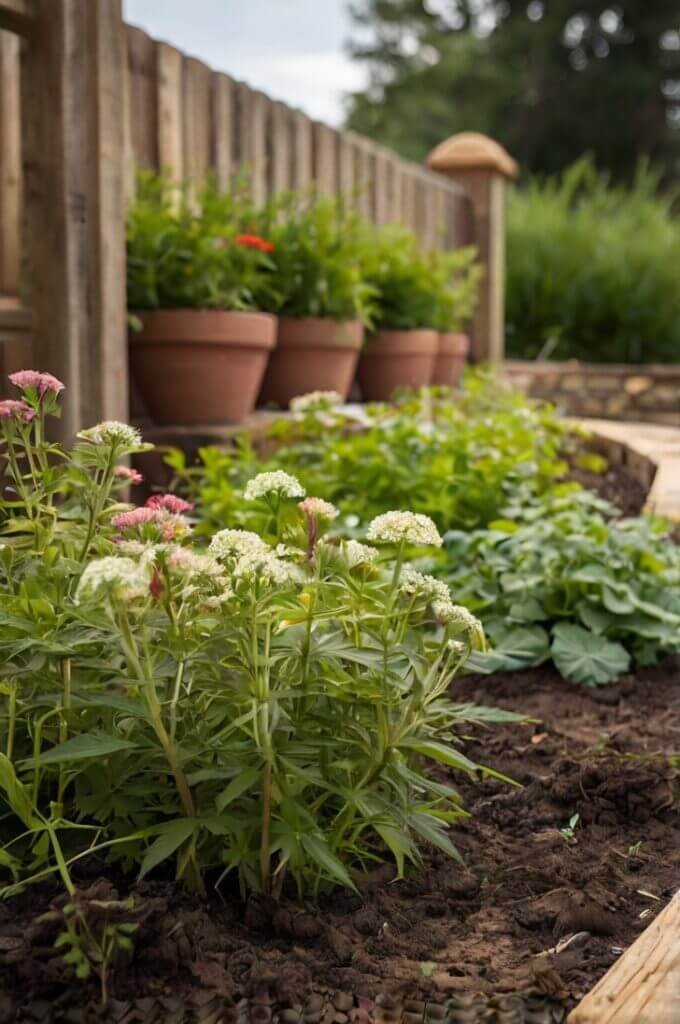
Common Types of Weeds Found in Flower Beds
Understanding the types of weeds that commonly invade flower beds is the first step in effectively managing them.
Here are some of the most common culprits:
Dandelions (Taraxacum officinale)
Dandelions are easily recognizable by their bright yellow flowers.
These perennial weeds have long, deep taproots that make them tough to remove completely.
If you don’t address them promptly, dandelions can spread quickly and take over your flower beds.
They reproduce by producing seeds that can blow in the wind, leading to more dandelions sprouting up in different areas.
Crabgrass (Digitaria spp.)
Crabgrass is an annual weed that often appears in late spring.
It spreads rapidly and can crowd out your flowers if not controlled early.
This weed thrives in warm weather and can form dense mats, making it difficult for your flowers to compete for space and nutrients.
Crabgrass is known for its sprawling growth habit and can quickly take over garden beds if left unchecked.
Clover (Trifolium spp.)
Clover is a weed that has both advantages and drawbacks.
While it helps to fix nitrogen in the soil, which can be beneficial for plant growth, it also spreads rapidly and competes with your flowers for essential nutrients.
Clover’s ability to quickly cover ground means it can easily crowd out your flowers if not managed properly.
Bindweed (Convolvulus arvensis)
Bindweed is a perennial vine that can be quite problematic due to its extensive root system.
This weed wraps itself around plants, potentially choking out your flowers and reducing their access to light and nutrients.
Bindweed is notoriously difficult to get rid of because it can regrow from even the smallest root fragments left in the soil.
Foxtail (Setaria spp.)
Foxtail is an annual grass known for its fluffy seed heads.
This weed can quickly take over flower beds if not addressed early on.
Foxtail spreads by producing a lot of seeds that can scatter and germinate, leading to a rapid increase in its presence.
Its aggressive growth habit can overshadow and outcompete your flowers for resources.
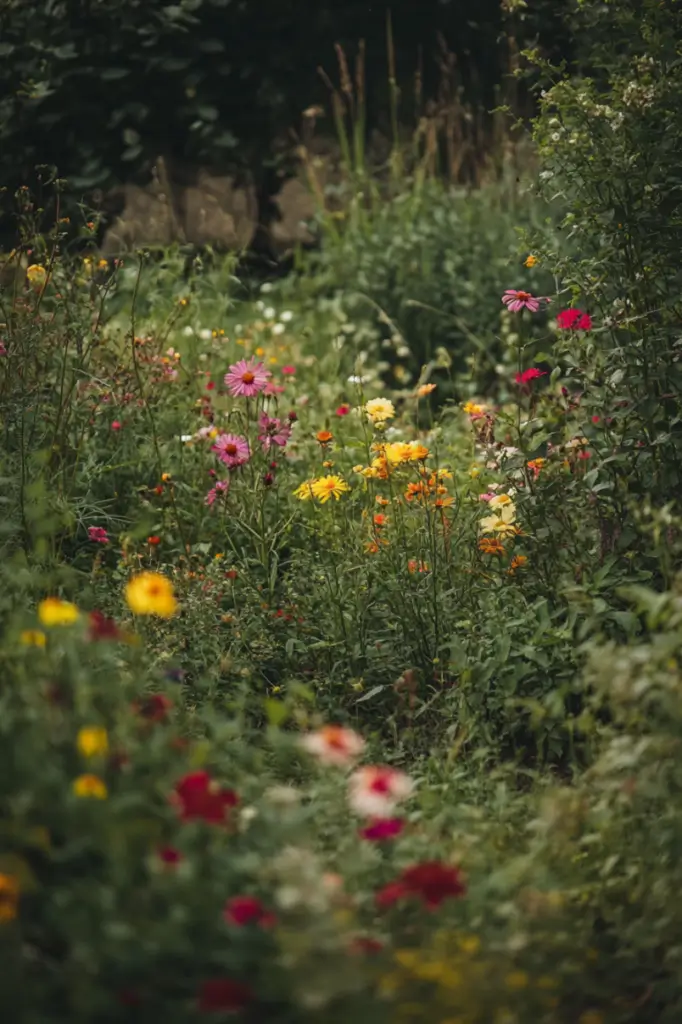
Manual Weed Control
Manual weed control involves physically removing weeds from your flower beds.
Here are some effective manual methods:
Hand pulling
Hand pulling is a straightforward method for controlling weeds.
To do this, grasp the weed near the base and pull it out of the soil, making sure to get the entire root.
If you leave any part of the root behind, the weed can regrow.
Hand pulling is most effective when the soil is moist, as wet soil makes it easier to extract the weeds and their roots.
Hoeing
Hoeing involves using a hoe to cut weeds off at the root. This method is particularly useful for clearing larger areas of weeds.
By slicing through the soil, you sever the weeds from their roots, which helps to control their spread.
Hoeing is most effective on young, shallow-rooted weeds and can quickly clear large patches of unwanted plants.
Mulching
Applying mulch around your flowers is an excellent way to suppress weed growth.
Mulch works by blocking sunlight, which prevents weed seeds from germinating.
It also helps retain moisture in the soil, creating a better environment for your flowers.
Organic mulches, such as wood chips, straw, or bark, not only suppress weeds but also break down over time, enriching the soil with nutrients.
Weeding tools
Using specialized weeding tools can make the process of removing weeds more efficient.
Tools like weeding forks, cultivators, and trowels are designed to help you dig up weeds and their roots with ease.
Investing in high-quality gardening tools can make manual weed control less cumbersome and more effective.

Chemical Weed Control
For larger infestations or persistent weeds, chemical weed control may be necessary.
Here are some important considerations:
Selective herbicides
Selective herbicides are designed to target specific types of weeds while leaving your desirable plants, like flowers, unharmed.
These products are useful when you have a particular weed problem and want to protect your garden.
Always read the label carefully to ensure the herbicide is safe for use around the plants you want to keep.
Non-selective herbicides
Non-selective herbicides kill any plant they come into contact with, making them effective for clearing out large areas of weeds.
However, they can also harm your flowers if applied incorrectly.
Be very cautious with these products and avoid spraying them directly on your flower beds.
They’re best used in areas where you want to eliminate all plant life before replanting.
Pre-emergent herbicides
Pre-emergent herbicides work by preventing weed seeds from germinating.
They create a barrier in the soil that stops seeds from sprouting.
Apply these herbicides before weeds start to grow, typically in the early spring.
This method helps keep your flower beds weed-free before the weeds even have a chance to appear.
Post-emergent herbicides
Post-emergent herbicides are used to control weeds that have already emerged.
They are effective for dealing with existing weed problems.
When using these herbicides, apply them carefully to avoid getting them on your flowers.
It’s important to follow the instructions on the label to ensure you’re using them correctly and safely.
Natural herbicides
For those who prefer an eco-friendlier approach, natural herbicides made from ingredients like vinegar, salt, or essential oils can be effective against certain types of weeds.
These natural options can be a good choice if you want to avoid synthetic chemicals, but they may require several applications to achieve the desired results.
Safety precautions
- Always read and follow the instructions on the herbicide label carefully.
- Wear protective clothing, including gloves and goggles, when applying chemicals.
- Avoid spraying on windy days to prevent drift onto desirable plants.
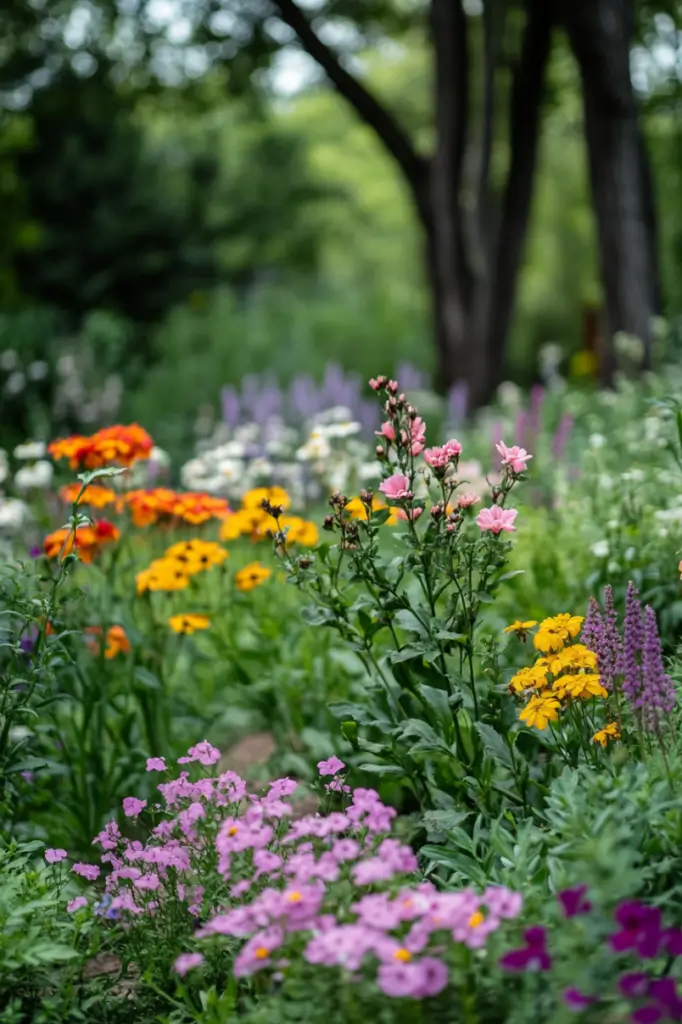
Integrated Weed Management
Integrated weed management (IWM) combines various strategies to control weeds effectively while minimizing environmental impact.
Here are some key components of IWM:
Cultural practices
Cultural practices involve choosing plants that are suited to your soil and climate.
Healthy, well-chosen plants are better at competing with weeds for water, nutrients, and sunlight.
Additionally, rotating your plants and using cover crops can help prevent weeds from taking over.
Cover crops, like clover or rye, grow in between your main plants and can smother weeds by blocking sunlight and reducing space for weed seeds to grow.
Regular maintenance
Keeping your flower beds in good shape is key to preventing weed problems.
Regularly water, fertilize, and prune your plants to keep them healthy and vigorous.
Healthy plants grow strong and can outcompete weeds, making it harder for them to thrive in your garden.
Monitoring and identification
Regularly check your flower beds for weeds.
Identifying the types of weeds you have is crucial because different weeds may require different control methods.
By understanding what kind of weeds you’re dealing with, you can choose the most effective strategy for managing them.
Combination approaches
Using a mix of methods can often yield the best results.
For example, you might use mulching to prevent weed seeds from sprouting, hand-pull weeds that appear, and use targeted herbicides for persistent problems.
Combining these approaches helps you manage weeds more effectively and reduces reliance on any single method.
Education
Staying informed about weed management practices is important.
Local extension services or gardening resources can provide valuable information specific to your region.
By keeping up with best practices and new methods, you can adapt your weed control strategies to be more effective and environmentally friendly.
By integrating various weed management methods, you can create a more resilient and beautiful flower bed.
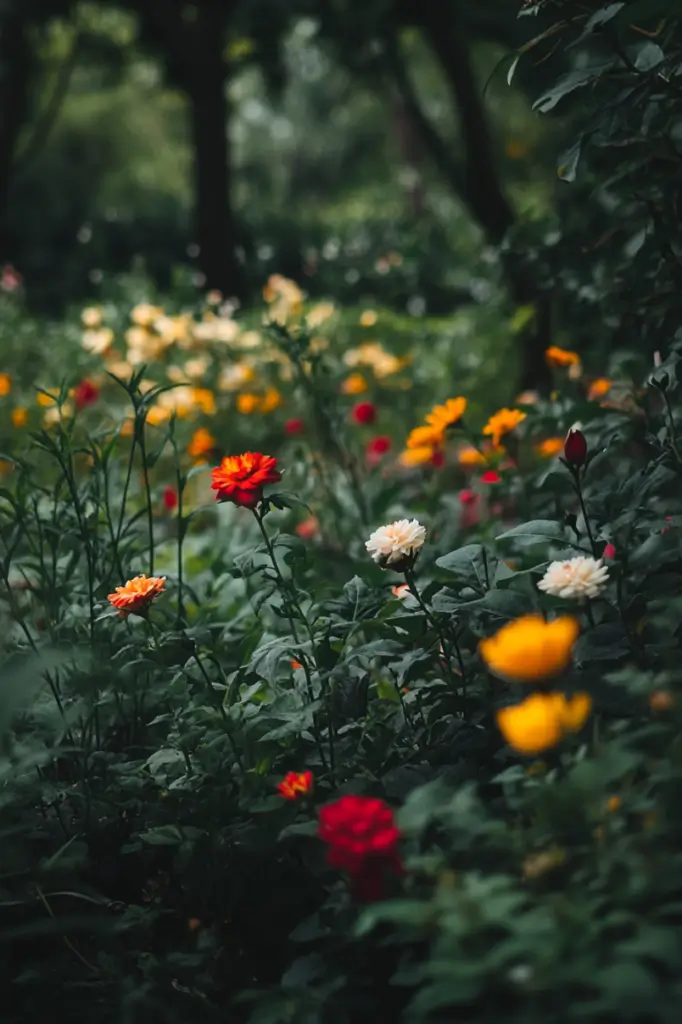
- Read also: Perfect Nourishment: Exploring the Best Bougainvillea Fertilizers
- Read also: Unlock Lush Growth: Tips for Caring for Succulents Indoor
Conclusion
Controlling weeds in flower beds is essential for maintaining a healthy and attractive garden.
Whether you choose manual methods, chemical controls, or a combination of strategies, being proactive is key.
Remember, a healthy garden is a weed-resistant garden.
By understanding the types of weeds, you face and employing effective management techniques, you can keep your flower beds blooming beautifully all season long.


